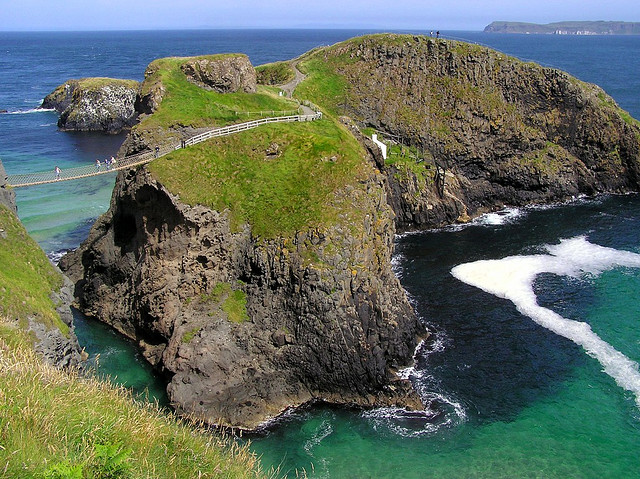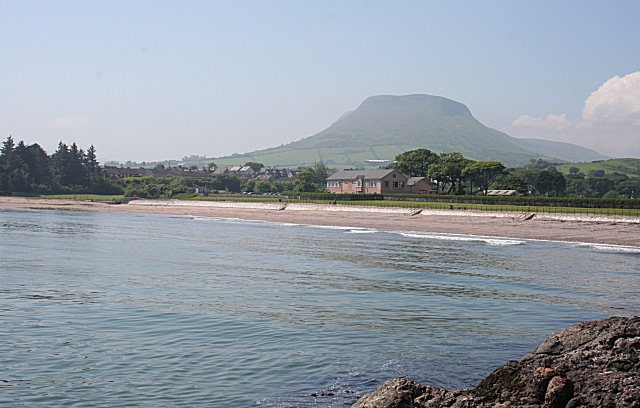Heading north from Ballycastle on the way to Ballintoy we
come to Kinbane Castle, reachable by a minor road off the Whitepark Road. The castle is in ruins and there are many
steps leading down to the main castle area, but those fit enough to tackle the
approach will be rewarded with some of the best views on the Antrim coast. The castle was built in 1547 by Colla
MacDonnell, brother of Sorley Boy MacDonnell, and was laid siege to more than
once by English forces.
As a member of the National Trust, I have visited many of
their properties over the years, but possibly the most unusual site I have been
to is the Carrick-a-Rede Rope Bridge. The
bridge was originally built in 1755 by fishermen to provide access to the small
offshore island called Carrick, from where they were able to fish for
salmon. Now, under the auspices of the
Trust the bridge is solely a novel tourist attraction, providing a frisson for
visitors as they wobble their way across while daring themselves to look down
at the foaming sea below. The bridge is
a popular attraction, so be prepared to wait to make the crossing, which is
only 20 metres. The island itself is
very small, but offers wonderful coastal views and birdlife. Back at the entrance to the site there is a
cafe for visitors to warm up in. The nearby village of Ballintoy has a number of facilities for visitors in the area, and the harbour is worth a visit for Game of Thrones fans, as it was used for the Iron Islands scenes.
 |
Carrick a Rede. Photo by Qole Pejorian, via Wikimedia Commons.
|



